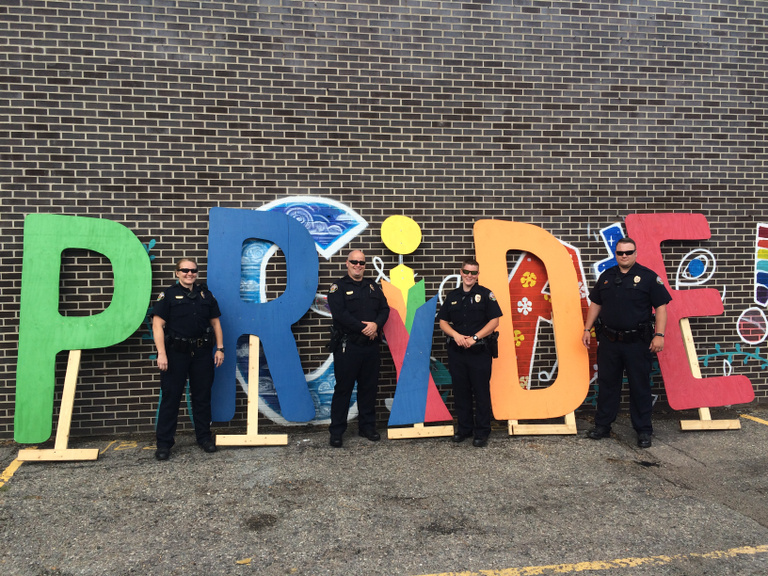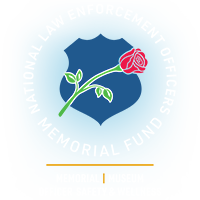Greg Miraglia, President and CEO of Out to Protect, says the current state of affairs for LGBT law enforcement officers has changed for the better. Out to Protect’s mission is “to create a greater awareness of the gay, lesbian, bi-sexual, and transgender professionals working in law enforcement and to support those pursuing a law enforcement career.”
Miraglia is suited for the role—with more than 35 years of experience in law enforcement with three different police departments, he also serves as a part-time faculty member at Napa Valley College, Santa Rosa Junior College, and City College of San Francisco teaching five courses in LGBT studies, a variety of law enforcement courses including all human relations, workplace harassment, community policing, and one of the only state-certified hate-crimes investigation courses in the State of California.
In honor of Pride month, Charles Fulcher of the National Law Enforcement Museum sat down with Greg to learn about the current LGBT climate in law enforcement.
Fulcher: Here in Washington, DC, we know that Bonnie Nora Davenport O’Neal was the first transgender officer for the Metropolitan Police Department. What impact have trailblazers like her had on the profession of policing?
Miraglia: It can absolutely make the difference for anyone following them. I was a teenage cadet in 1978. The first two women in my department were hired that year and sent to the Police Academy. There was huge coverage in the paper, but today that wouldn’t be newsworthy. That set the tone for how women would be received in the department moving forward.
The same is true for LGBT officers. The first person typically has the most difficult time. They were often people who worked extra hard to show they could do it well, and in so doing, they set the tone and proved LGBT expectations can do the job. If they’re failures, they get a lot of “told you so’s.” There is a lot of pressure, and they might even be set up to fail from the start.
Under normal circumstances, there are lots of obstacles—field training, evaluation, etc. If the organization has made up its mind it doesn’t want you, it doesn’t matter how hard you work. That’s the reality of things. If they get a fair chance, and do a good job, it can make a world of different for everyone who follows. Even in smaller agencies where change might be hard to accept, if they perform, all of a sudden attitudes can change about the viability of hiring future LGBT persons.
Fulcher: What’s the current state of affairs for LGBT officers? Is the environment continuing to improve? How have you seen things change during your career?
Miraglia: Things have changed for the better across the country. It’s not perfect in every segment, but there are thousands openly serving. There are many social media groups for LGBT officers that have thousands of members. Many law enforcement agencies have LGBT liaisons … that’s not uncommon anymore, and more are being added all the time. It’s a world of difference. Is it perfect? No. Homophobia isn’t fully gone, and there still are problems, especially transphobia, but they’re not nearly what they were.
I’m seeing interest in agencies wanting to learn more. Many really want to increase cultural competence around LGBT issues. California even has laws requiring that. More and more agencies are participating in Pride events, openly recruiting LGBT officers … it’s fantastic. Lots of work still to do, but much better.
Fulcher: How is Out to Protect furthering understanding of LGBT issues in LE?
Miraglia: The big thing is providing training. We’re offering awareness training, train-the-trainer sessions to expand even more, and full training academy for LGBT liaison officers. We’re trying to give agencies as much of that content as possible. The LGBT awareness course is four hours online, and we offer it for free to any LEO across the country. We’ve had thousands of people take the class since it started in 2016.
We’re trying to take all the excuses away … money, access, opportunities, etc. The reality is, there are agencies who are interested in doing it. They’re putting efforts into training: increasing awareness through education, combating homophobia and transphobia. We’re also partnering with the COPS division of the DOJ, as well as with the FBI, to expand our reach for training.
Fulcher: What’s most important for our community to know about today and tomorrow?
Miraglia: There’s a tremendous need for law enforcement to build trust with all communities, especially with LGBT communities. A lot of agencies are working hard to do that. Liaison programs are the path to build trust … they put a human face with a name to represent a law enforcement agency. It can make all the difference to build relationships and trust. That’s the most urgent need. It’s really promising to see a lot of agencies doing that.

To learn more about LGBT issues in law enforcement, check out a previous program from the National Law Enforcement Museum on the Stonewall Riots, and read our post about Bonnie Nora Davenport O’Neal, the first transgender officer for the Washington Metropolitan Police Department.
About the National Law Enforcement Officers Memorial Fund
Established in 1984, the National Law Enforcement Officers Memorial Fund is a nonprofit organization dedicated to honoring the fallen, telling the story of American law enforcement, and making it safer for those who serve. The Memorial Fund maintains the National Law Enforcement Officers Memorial in Washington, D.C., which honors the names of all of the 23,229 officers who have died in the line of duty throughout U.S. history. The National Law Enforcement Museum at the Motorola Solutions Foundation Building is committed to preserving the history of American law enforcement and sharing the experiences of service and sacrifice for generations to come.

